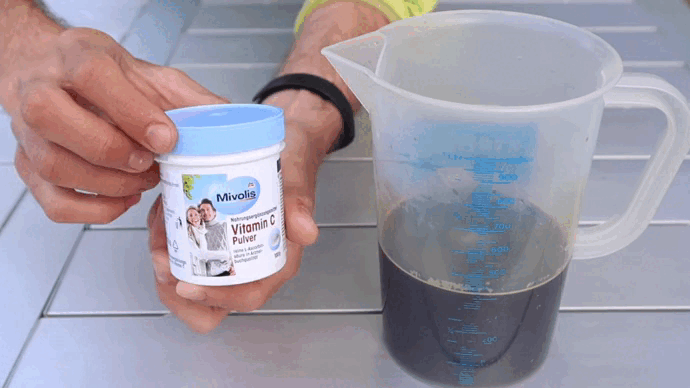Caffenol Developer
- Alternative Processes

- Apr 20, 2022
- 4 min read
Updated: Mar 11
With Nejc Urankar

Nejc Urankar is 25 years old from Slovenia and starts his journey in the magical world of alternative processes with Autochrome. He does it all: from making orthochromatic and panchromatic emulsions, to building his own cameras and designing equipment.
Nejc took the darkroom way because it's a craft, rather than something intangible. His project Lost Light Art is a precious collection of his experiences, experiments and knowledge.
Before we dive into developing with coffee, can you tell me about Lost Light Art and what is the purpose and goal for your platform?
The reason why I started with Lost Light Art’s Blog & YT channel was to spread the knowledge of early photography when it was not just a hip thing but a craft in the true sense of the word. To be a photographer back in the days required a lot of knowledge about chemistry and hand skills. This is why it got lost in time a bit especially when we entered a digital era. However in the days when we are in front of a screen 24/7 there are more and more people who just want to detach and rest their mind a bit and this is where I come in. I am glad that there are more and more people interested in what I do who are willing to devote their time to learn something new. Many techniques seem very hard at the first glance but with a nice and clear tutorial things become much easier and doable.
So because of Covid you found yourself stranded on a paradisiac Croatian island and your first thought was, let’s develop something with coffee? That’s so COOL Sure why not :D I have been developing film in caffenol before but I had a wish to try it out with dry plates as well and this seemed like a perfect opportunity. I went to the supermarket, bought everything I needed, exposed a dry plate, mixed the developer and there I was already processing the plate in my improvised trunk darkroom :)
Instant Coffee Washing soda Vitamin C
If I wanted to start developing with coffee, what ingredients do I need and what is the exact process?
All you need to make Caffenol are the following ingredients:
Instant coffee that should be as strong as possible. Avoid decaf! (Coffee contains caffeic acid the acts as the first developing agent)
Washing soda (acts as the accelerator raising the PH to a suitable level for the developing agent to operate)
Vitamin C in powder form or tablets (Vitamin C aka ascorbic acid works as a second developing agent to further speed up the reactions)
Then using 350ml of water you can mixed thing together in the following order:
1- First add 6 rounded Teaspoons of instant coffee to 150 ml of water (Mix until dissolved).
2- Proceed with 4 leveled Teaspoons of washing soda to 200ml of water.
3- Mix coffee and soda solutions together.
4- And finally 1 leveled teaspoon of vitamin c.
Woilà now that you have your caffenol mixed all you have to do is develop your film/plate/paper. Developing times will depend on how exact you were with your measurements and what material you are using. Probably you will have to do some experiments first to get things the way you want. You can basically develop any silver based process no matter the medium it is coated on.
Mix 6 rounded Teaspoons of instant coffee with 150ml of water Mix 4 leveled teaspoons of washing soda with 200ml of water
Mix the two solutions together. Add 1 leveled teaspoon of vitamin c.
It’s not only environmentally friendly, it’s much much cheaper than buying a regular developer! Do you feel the final results are as good?
Yes it could! I am always surprised by the results of these DIY developers because I think that with modern chemicals we can often be under the impression that nothing will work as good. But here is the good news: it does! Of course different developers will act differently resulting in images that are more or less dense, having bigger or fine grain, etc. it just depends what you want to achieve. You should definitely give it a try!

Final outcome, image printed on a dry plate developed using caffenol
You are receiving some success in making and selling dry plates! Can you tell us something about this side business?
Yes I have been working and shooting exclusively with dry plates for the last 4 years. Just to give you a bit of background they were invented in the early days of photography almost 150 years ago with one goal to replace the Wetplate collodion process.
Shooting Dry Plates is an immensely rewarding and enjoyable way to make a photograph. There’s something special in the way it slows you down and makes you pay attention to every detail. Not to mention the satisfaction you get when you see the image appearing in-front of your eyes the resolution of it that by far exceeds any commercially available film…
These are all the reasons why I have decided to “revive” Dry Plates and make this magical process available to everyone!
Zebra Dry Plates are entirely made by hand from cutting the glass to coating it with light sensitive emulsion so making them is a hard and responsible job, but seeing photographs made with the plates I coated is absolutely worth the grind!
Coffee makes everything okay, especially our guilty conscience when we stop using traditional BW developers which are harmful to the environment due to their chemical composition, presence of silver, high pH and chemical residues. Learn Caffenol and other sustainable processes inside the Alternative Processes Academy ☕
Author: Chiara Salvi
Photos by courtesy of the artist.


















Comments